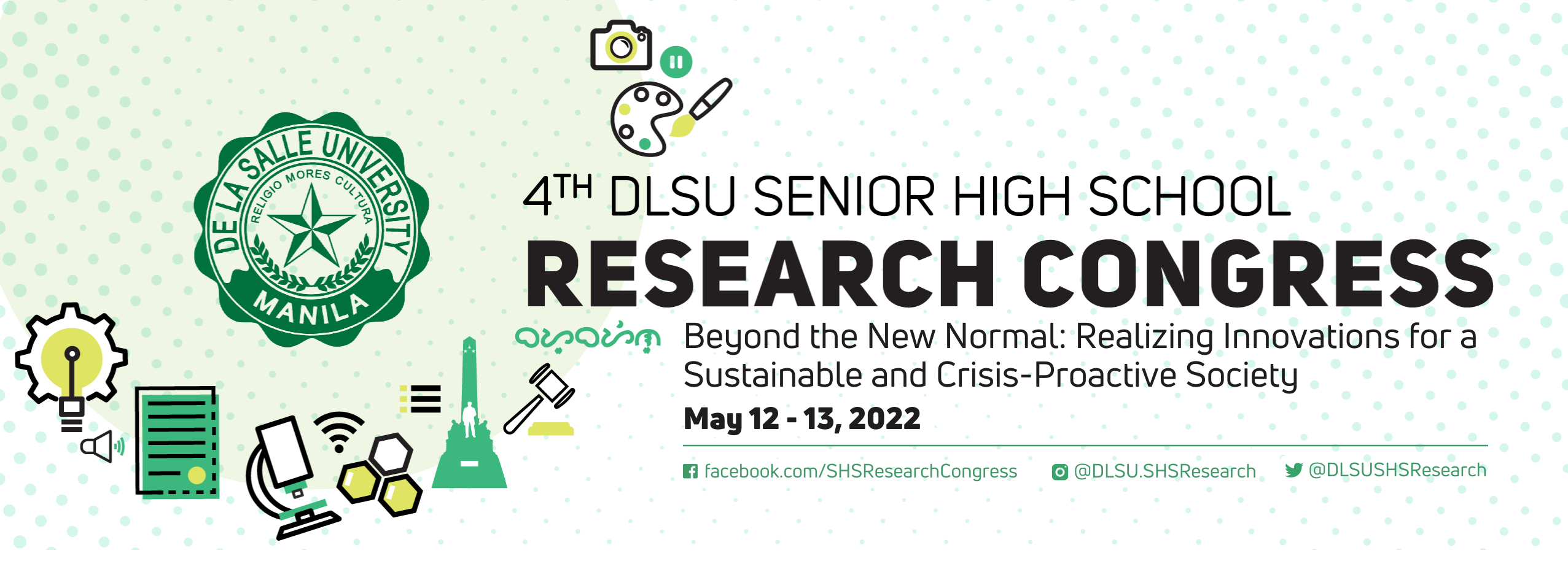Document Types
Paper Presentation
Research Advisor (Last Name, First Name, Middle Initial)
Divina M. Amalin
Start Date
13-5-2022 10:30 AM
End Date
13-5-2022 12:00 PM
Abstract/Executive Summary
The Philippines, as an agricultural country in the age of modernization, is constantly striving for technological integrations that can enhance the agricultural sector in areas like production security and sustainability. The overarching goal of this study is to hasten the transition from traditional to smart farming by aiding in the development of agricultural tools that accurately describe pest infestation level and presence of biological control agents essential in increasing crop productivity and sustainability. This study contributed to the development of the Agricultural Database for the Automated Pest Infestation and Parasitism Level Estimator (AutoPPLeX) through the expert annotation and interpretation of leaf segments gathered directly from Zamboanga and Basilan. Additionally, the researchers explored how image specifications like focus, lighting, and shooting angle can maximize annotation accuracy. The research team underwent quantitative and qualitative assessments of coconut segments with the pest, Aspidiotus rigidus Reyne and its known natural enemy, Comperiella calauanica using LabelMe, a proprietary annotation tool developed by Taiwan National University specifically for the study. Through manual annotation, the researchers delivered six data sets for the development of AutoPPLeX complete with total pest count and percent parasitization. Aside from this, the researchers concluded that C. calauanica had been effective in parasitizing A. rigidus in the majority of the image segments provided. Further, the researchers highlighted that to minimize human error in future manual annotation pursuits, there must be consistent and level lighting, high resolution, and close angle for all leaf segments.
Keywords
agricultural sector; artificial intelligence; Automated Pest Infestation and Parasitism Level Estimator (AutoPPLeX); image annotation; smart farming
Research Theme (for Paper Presentation and Poster Presentation submissions only)
Sustainability, Environment, and Energy (SEE)
Evaluation of the Success of Biological Control Approach for the Control of Aspidiotus rigidus Reyne, Invasive Pest of Coconut, through the Development of an Innovative Automated Pest Infestation and Parasitism Level Estimator (AutoPPLeX) in Smart Farming Applications
The Philippines, as an agricultural country in the age of modernization, is constantly striving for technological integrations that can enhance the agricultural sector in areas like production security and sustainability. The overarching goal of this study is to hasten the transition from traditional to smart farming by aiding in the development of agricultural tools that accurately describe pest infestation level and presence of biological control agents essential in increasing crop productivity and sustainability. This study contributed to the development of the Agricultural Database for the Automated Pest Infestation and Parasitism Level Estimator (AutoPPLeX) through the expert annotation and interpretation of leaf segments gathered directly from Zamboanga and Basilan. Additionally, the researchers explored how image specifications like focus, lighting, and shooting angle can maximize annotation accuracy. The research team underwent quantitative and qualitative assessments of coconut segments with the pest, Aspidiotus rigidus Reyne and its known natural enemy, Comperiella calauanica using LabelMe, a proprietary annotation tool developed by Taiwan National University specifically for the study. Through manual annotation, the researchers delivered six data sets for the development of AutoPPLeX complete with total pest count and percent parasitization. Aside from this, the researchers concluded that C. calauanica had been effective in parasitizing A. rigidus in the majority of the image segments provided. Further, the researchers highlighted that to minimize human error in future manual annotation pursuits, there must be consistent and level lighting, high resolution, and close angle for all leaf segments.


